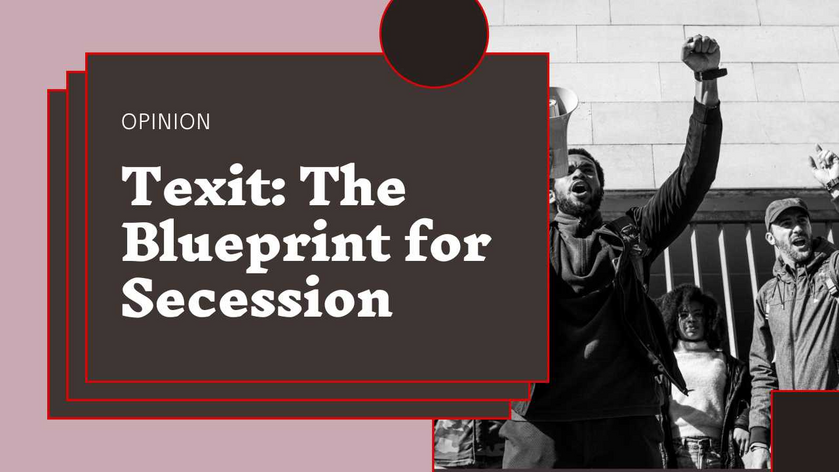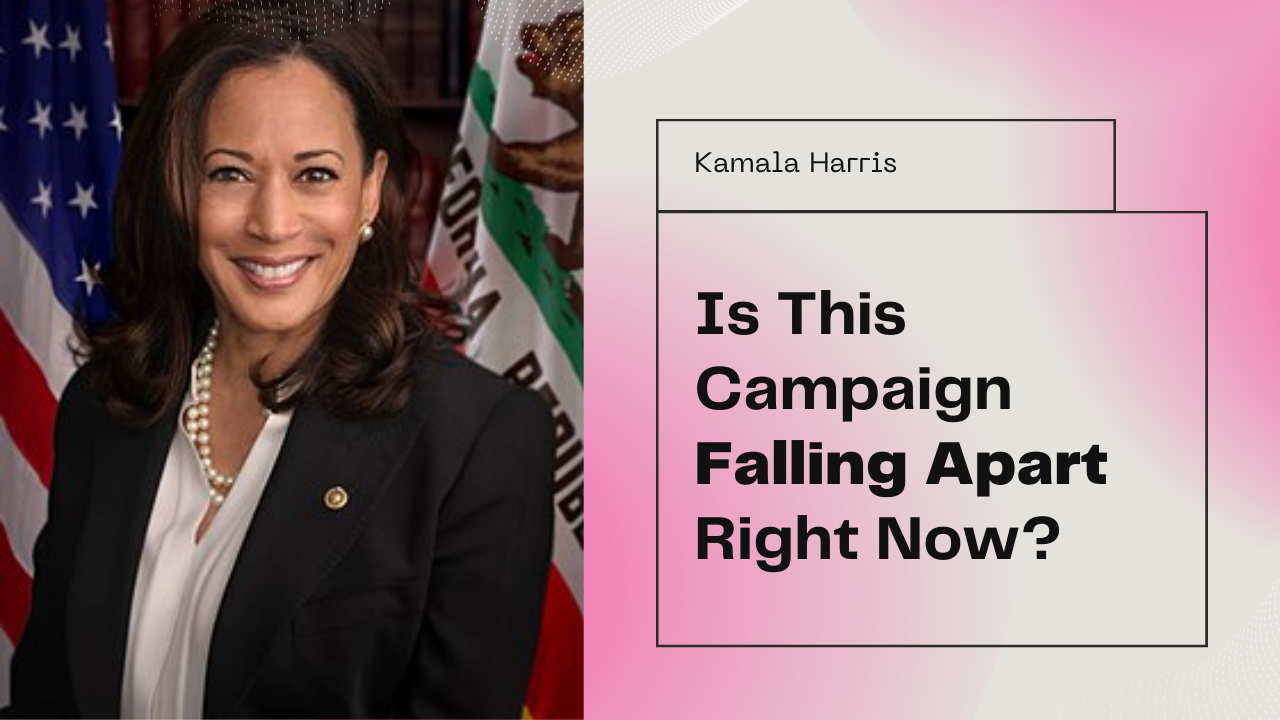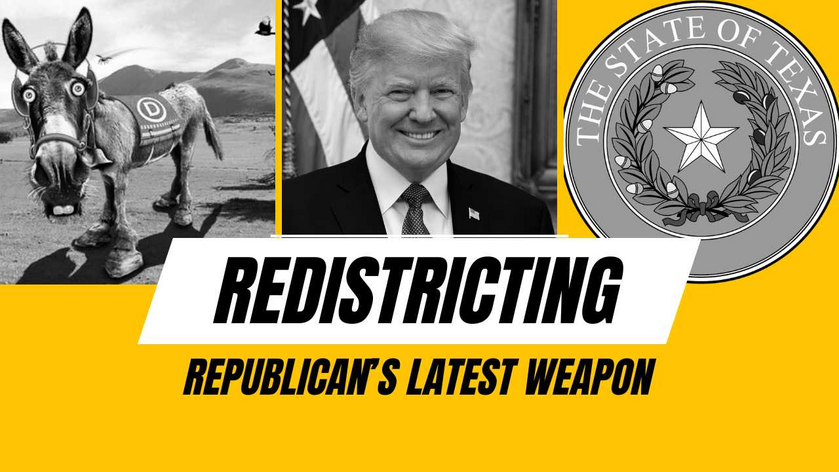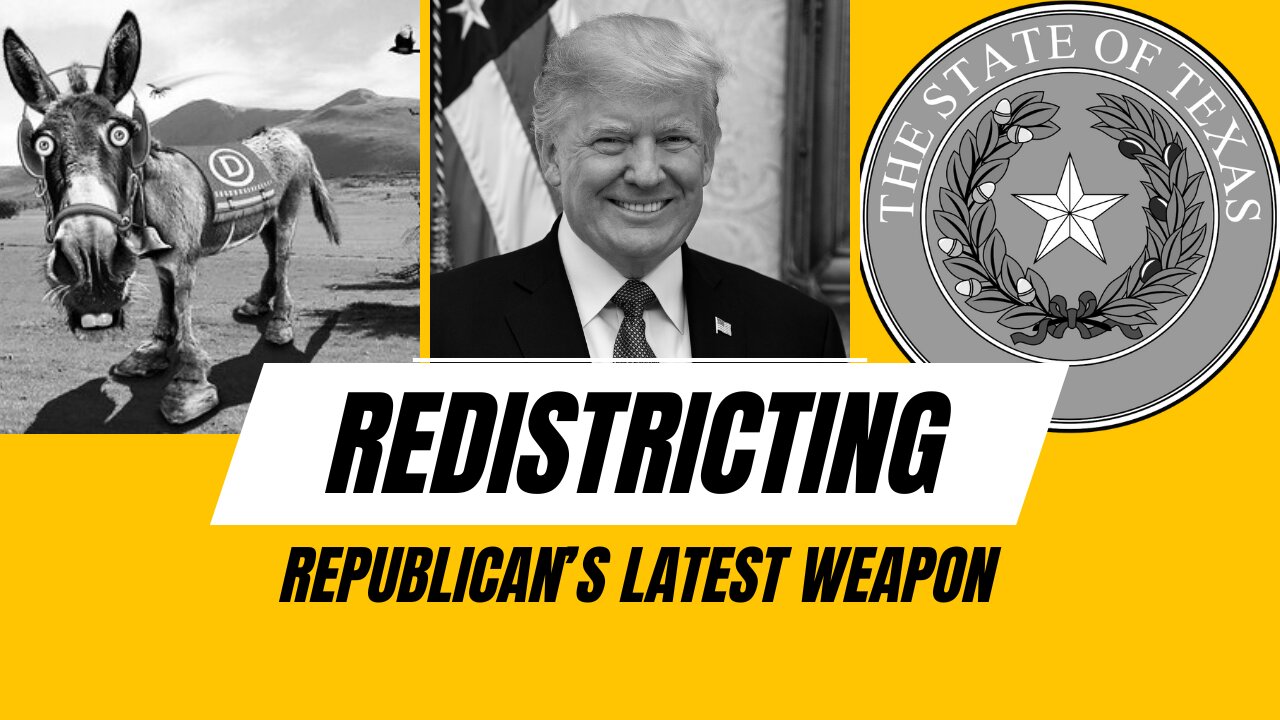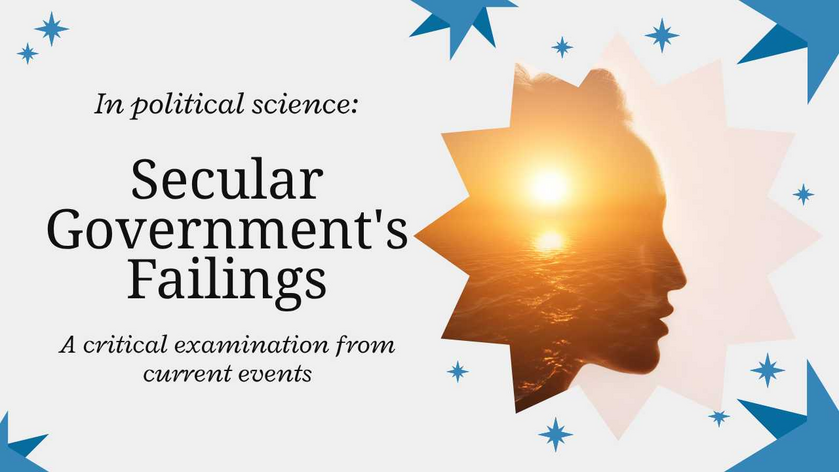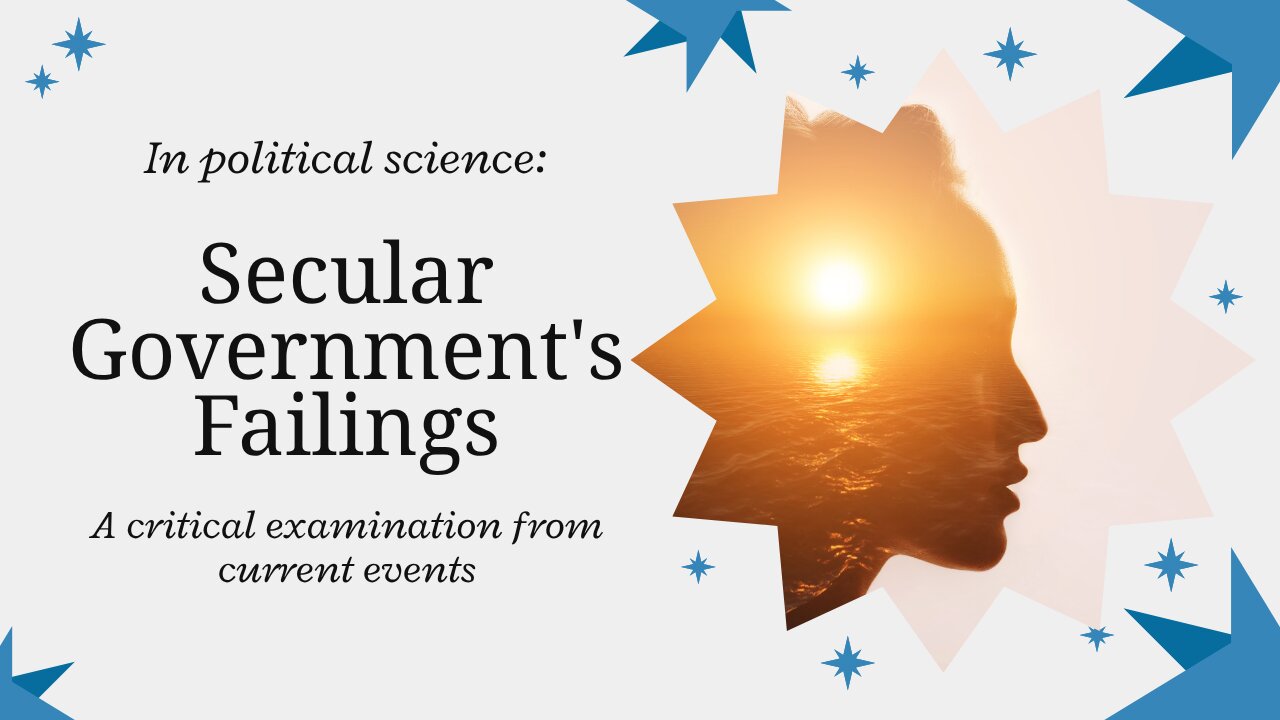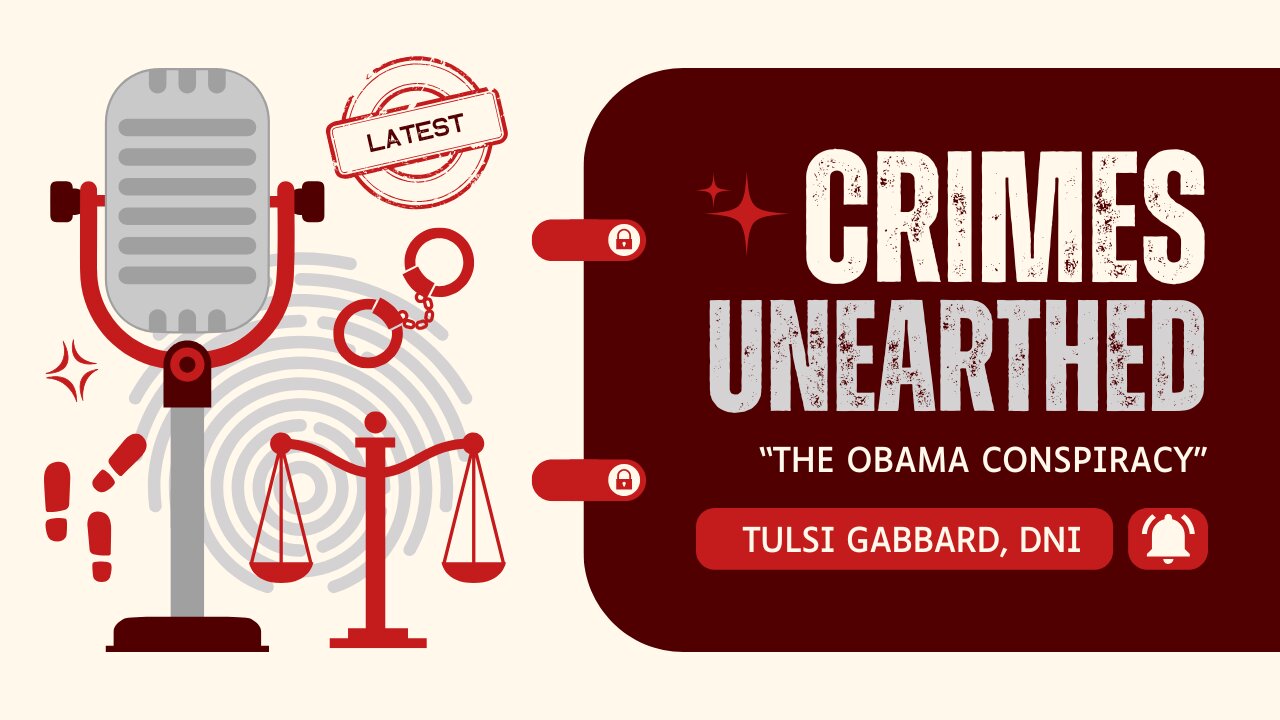Miller, Dan. Texit: Why and How Texas Will Leave the Union. Conroe, Texas: Defiance Press & Publishing, 2018.
More than a quarter-century ago, Dan Miller founded the Texas Nationalist Movement, which he dedicated to making Texas an independent republic once more. Six years ago – during the Trump administration – Miller published his manifesto for Texas Independence. He calls it Texit, as a play on the name Brexit, or the exit of Britain from the European Union. In about 275 pages, he sets forth a proposition that seems radical today: that the United States of America is no more a single nation-state than is the European Union. Which means that an orderly secession is not only possible but perfectly legal. And it is high time – and way past time – for Texas to take its leave.
What is Texit
Texit means what it sounds like: Texas should exit from the federal union called the United States of America. That notion was not so radical, in the early history of Texas, as one might suppose. Texas, or Tejas (a corruption of the Native American word Taisha meaning “friendly”), began as a State within the first independent polity called Mexico, after the Mexican War for Independence. Miller carefully presents the history of what became the Texas Revolution. It begins with the Battle of Gonzales (and the COME AND TAKE IT flag), continues with The Alamo, and ends with the Battle of San Jacinto in what is now the city of Houston.
Independence brought with it two challenges. The “Lone Star Republic” had racked up crushing debt during its War for Independence. Furthermore, Mexico wanted it back! So President Sam Houston made the fateful decision to apply to the United States Congress for formal admission. The United States at first refused the application – but then accepted it so that Texas wouldn’t ally itself with the United Kingdom. Texas did get help with its debts – by selling its western and northwestern lands.
Dan Miller makes the point that Sam Houston probably wouldn’t have accepted that deal, if he knew then what Americans and Texans alike know today. In fact, Texas was part of the Confederacy during the War Between the States. After that, a pivotal Supreme Court decision stopped all further talk of Texas independence – until today.
Texas v. White
The case of Texas v. White, 74 U.S. 700, 19 L. Ed. 227, and 7 Wall. 700 (1869) revolved around the Texan Indemnity Bonds – the form of payment for those western and northwestern lands mentioned earlier. The United States had issued $10 million of those bonds. In 1861, Texas sought to sell all the bonds still unsold. But Texas’ secession and “rebellion” complicated matters. After the War Between the States, Texas pressed its case against certain bondholders, who had consistently refused to honor the bonds.
Chief Justice Salmon P. Chase, writing for the Court, said Texas was entitled to its bonds – but at a price. The price was an acknowledgment that Texas had joined an indissoluble union from which secession was unlawful.
Dan Miller knows that he must dispose of Texas v. White, or Texit would remain illegal, or at least extra-legal. Though he doesn’t say it in so many words, Miller strongly suggests that the War Between the States was an unlawful war. The only reason anyone sympathizes with the aims in the War, is that the Confederates adhered to a practice regarded as heinous today: slavery. No slavery, no War – as all historians now agree.
Indestructible union of indestructible States?
Besides that, Miller relies on the dissent by Justice Robert C. Grier, and also points to Chase’ characterization of the United States as “an indestructible union of indestructible States.” That last part is demonstrably incorrect. Though Miller doesn’t raise this specific issue, Article IV Section 3 specifically lets parts of States secede from the rest. True, that requires the consent of Congress, but it is possible. And it has taken place, several times. Kentucky formed from Virginia, Tennessee from North Carolina, Maine from Massachusetts, and Alabama and Mississippi from Georgia.
West Virginia deserves special mention. The counties that formed it did not ask the consent of the Virginia legislature. Instead, Major General William Rosecrans, commanding Ohioan troops, captured the area, and stopped the argumentative Confederate generals from retaking it. Thus West Virginia is a province in the literal sense of the word: a conquered region.
Miller mentions West Virginia only briefly. But he mentions several mentions of States as independent entities in four historical Documents. These are the Declaration of Independence, the Articles of Confederation, the U.S. Constitution, and the Northwest Ordinance of 1787.
As another key word on this subject, Miller reminds his readers that the Supreme Court is not perfect. Any scholar of the Supreme Court would have to concede that. Recently the Supreme Court reversed an error of forty-nine years’ standing: Jane Roe v. Henry Wade, 410 U.S. 113 (1973). See Dobbs v. Jackson Women’s Health Organization, 597 U.S. 215 (2022).

Texit in popular culture
Before continuing, one must consider Miller’s astute observation that Texit, or something like it, has found expression in popular culture. Miller asserts that Texit first appears in popular fiction in the 1979 novel The Power Exchange by Alan R. Erwin. In it, the Energy Crisis attendant upon the Yom Kippur War precipitates Texas independence. Then came Daniel Da Cruz’ Texas Trilogy: The Ayes of Texas, Texas on the Rocks, and Texas Triumphant. All deal with Texas declaring independence in light of a very strange treaty between the United States and the Soviet Union. Miller then reveals an “explosion of Texit fiction” in the first decade of this century, with works like:
Shattered Union, a 2005 video game that begins with Texas secession,
Jericho, a 2006 TV series in which Texas declares its independence after a nuclear attack against the United States,
Lone Star Daybreak by Erik L. Larson,
Patriots of Treason, a series by David Thomas Roberts, and
Bushwick, a 2017 movie following two men from Brooklyn who flee a paramilitary incursion. Somehow an independent Texas is the cause of this.
But Miller leaves out two novels that predate all of these, perhaps because they both paint Texas in a bad light. They are:
The Texas-Israeli War: 1999 (1974), in which Israeli mercenaries rescue a kidnapped U.S. President from the Texas Rangers, and
A Specter is Haunting Texas (1969), in which a fortune seeker makes revolution against a hormonally boosted Greater Texas population.
Why Texit
Miller understands what Thomas Jefferson did: when one people must break away from another, they need to say why. In his third chapter, he carefully documents the grievances Texas has (or should have) with the federal government:
A “super-state,” indeed a police state;
Unrepayable national debt,
Texas receiving far less funding than it contributes in taxes (with figures to back this up),
Illegal immigration and the burden this imposes on “host” communities,
An “irredeemable” progression toward tyranny, and
Behavior by the present federal government that echoes that of, for instance, Dictator Santa Anna of Mexico.
In 2018, Miller recognized one problem for his purposes: the President of the United States was Donald J. Trump. It was no longer Barack H. Obama, nor was it Hllary Rodham Clinton. Naturally he reminded his readers sharply that Trump was only one man. In short, Miller strongly cautioned his readers to hold little hope that one man, even Trump, could reform the un-reformable.
Time and events have proved Miller correct. If he exaggerated any part of his grievances – the “causes that impel” Texas to Texit – then his prose presents no exaggeration today. Every problem he mentioned has gotten an order of magnitude worse. Indeed, when Resident Biden, on his first day in office, ordered contractors on the Texas-Mexican border wall to down tools and go home, the present pass became inevitable.
The FUD Factor
Next, Miller discusses what he calls “Project Fear”: – the instillation of Fear, Uncertainty and Doubt. That, besides that uniquely Texan practice called chubbing, remains today the only practical way to oppose Texit. He knows it, and he attacks the FUD Factor directly.
Is Texit illegal? Does any law forbid it? No. In fact, nor did any such law in 1860, when South Carolina seceded after the election of Abraham Lincoln. Miller’s attack on Texas v. White is his main line of attack against the allegation of illegality and unconstitutionality. But further to that, United States foreign policy, for whatever motive, has always emphasized self-determination of nations. (Or at least, it has paid lip service to that concept, as has the United Nations organization.) How, he asks, can the United States deny any right of international secession from itself if it supports such secession in the contexts of other nation-states? His answer: it can’t, without laying itself wide-open to a charge of hypocrisy.
Would the federal government let Texit happen – and let Texas go? That isn’t the question, says Miller. The question is, how would the federal government stop Texit? By military force? Sorry, but the federals have no heinous crime against humanity, like slavery, to avenge this time. Furthermore, he suggests that the “blue States” would be more inclined to let Texas go. Two fewer Republican Senators, twenty-five fewer Republican Representatives, and forty fewer Republican electoral votes.
How the Texit War might play out
And the red States? They would split, Miller says. Perhaps some would join Texas.
Mr. Miller’s treatment of the reaction of the international community might not be accurate after all. For example, he proposes that many countries might impose economic sanctions on a federal government trying to hold onto Texas. Actually, member States of the World Economic Forum might decide to send in their own troops to support the federals. Texit goes squarely against the one-world government they seek.
The BRICS countries would split on this. China is the Middle Kingdom to Rule The World. They wouldn’t want Texit to succeed, so they might offer their troops in exchange for Taiwan. (And ask the U.S. Navy to transport those troops.) India would remain carefully neutral. Brazil, unless a freedom-loving faction comes back, would throw shade on Texas, but perhaps do little else. South Africa might do the same. But Russia – ah, that would be a different kettle of fish. They might open a new battlefront by launching a Special Military Operation to reclaim Alaska. Russian forces might even fight side-by-side with Texans, to distract the federals from the dream of “redeeming” Alaska.
Furthermore, many of the “red States” would secede and join forces with Texas. Texas Army and Air National Guardsmen would instantly resign their National Guard commissions and become State Guardsmen. In short, if the United States did start a Second War Between the States, we have reason – beyond the reasons Miller sets down – to believe Texas would win.
What next?
Miller discusses extensively the resources Texas would have at its command. Among the items he mentions is Texas having its own power grid. That is true: the Texas interconnection covers nearly all of Texas, except for parts of El Paso, Far Northern Texas, and the western bank of the Sabine River. Extending the interconnection to cover those areas would be simplicity itself.
Miller did not treat currency and banking as well as he might have. True, Texas could use the U.S. dollar as its currency, no matter what Washington (or the Federal Reserve) had to say about it. But why bother? Texas has its own gold reserve. Why not, then, coin gold or produce warehouse receipts denominated in gold Troy pounds? (Or even minas and talents?)
His solution to Texas’ share of the national debt is as uproariously funny – but workable – as it is simple. Texas should remind the federal government of all the taxes Texas individuals and businesses have paid since the federal income tax became effective. Texas has been, quite simply, a net tax producer, and has overpayed for what it’s gotten over the years. Crediting that overpayment against Texas’ national debt share should more than cancel that share out.
How does Texas make it happen?
Aside from the FUD Factor, Texit faces many challenges, mostly from the attitudes of Texans themselves. From atomization (“I’m all alone!”) to apathy (“What’s the use?”) to campaign finance, Miller covers them all. He sternly exhorts his people to “get with The Program” and take seriously the advantages of independence. Any advocate for human liberty often must make the same argument with his neighbors who actually want the federal super-state.
After that, he discusses in detail the wording of a referendum on Texit. Since Miller wrote this work, two sympathetic Texas legislators have introduced “Texit Bills” calling for such a referendum. In his discussion of this point, Miller names many familiar names, including present Governor Gret Abbott, Lieutenant Governor Dan Patrick, and Speaker of the Texas House Dade Phelan. In short, he knows who his enemies are.
Political enemies of Texit have “chubbed” both those referendum bills to death. Miller’s Texas Nationalist Movement has responded by “primarying” them – and that last tactic shows every sign of success. Indeed, Dade Phelan might not even be a member of the Texas State House next year.
Real-life – and larger than life – personalities
Again, Miller couldn’t have predicted all present events in 2018, but those events seem to bear him out. Dan Patrick and Attorney General Ken Paxton have publicly expressed their frustration with the Texas-federal relationship. Gov. Abbott has acted like a President of the Republic of Texas in all but name, on immigration matters. It remains only for him to summon the legislature into special session.
The United States Supreme Court almost provoked that special session call with its ruling in Texas v. D.H.S., vacating an injunction against the Border Patrol. Gov. Abbott didn’t do that, but instead excluded the Border Patrol from a key stretch of the border. The original Texians of Gonzales said, “Come and take it.” Gov. Abbott has said, “Come and push us aside.”
Now suppose the federal courts provoke Texas again, with an injunction, or vacatur, affecting either the physical barriers Texas has erected, or its new law making unlawful presence in Texas a State crime.

Does Abbott call his special session then? Imagine the scenario: a Texit Referendum on the ballot in a Presidential election.
Now consider another larger-than-life figure: Elon Musk. Already he is seeking to reincorporate his signature automobile maker in Texas, after reincorporating his space company in Texas. The above provocation could see Musk becoming Texas’ chief armorer. Imagine, if you will, his heavy-lifting rocket ship seeing service as a rapid-deployment vehicle – or a strategic bomber.
Summary
Six years ago, Dan Miller laid out grounds for Texit, all the obstacles (both real and illusory) in its path, and a plan to overcome them. Only one real thing that can stop Texit, if its people are angry enough to seek it. And that would be for the election of a President sincerely determined to redress Texas’ grievances. A President, furthermore, ready to act and having adequate support. (And if Texans ever get angry enough about their overpayment of income taxes and other excises, even that will not avail.)
So says Miller, or at least so one may infer from his book. He evidently didn’t want to make a flat declaration that the War Between the States was an unlawful war. But he clearly meant that, and that it had not justification, but excuse – the desire to abolish slavery.
True enough, before one can believe any part of Miller’s thesis, one must first accept the notion that the United States is not “an indestructible union of indestructible States.” Beyond that, he lays out a strong case, and one with which his opponents would have to reckon. His case is twofold: that Texit is legal, and that Texit is feasible. That applies equally to the winning of independence, and carrying on once independent. The only thing Miller hasn’t thought of, is that perhaps the very threat of Texit would impel the rest of the States to “reset” the federal-State relationship. With that, everyone would win.
Link to:
Video:

Defiance Press & Publishing:
The Texas Nationalist Movement:
Two prior videos:


Declarations of Truth X feed:
Declarations of Truth Locals Community:
https://declarationsoftruth.locals.com/
Conservative News and Views:
Clixnet Media
